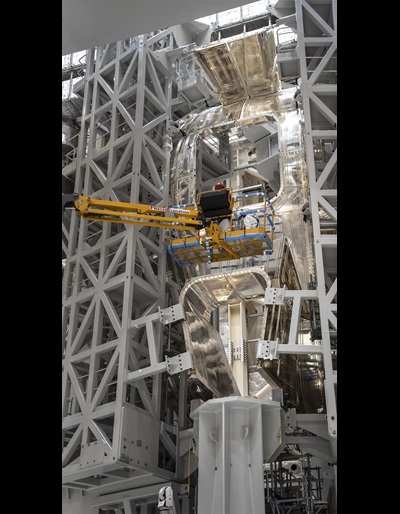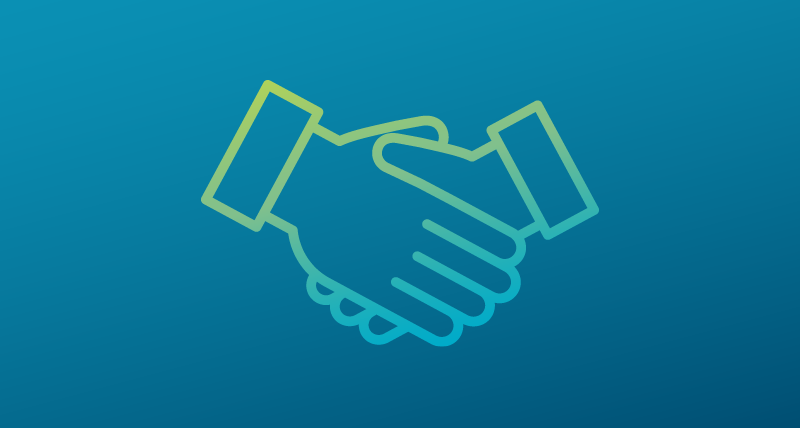The importance of metrology when harnessing the power of the sun
Interview with Dave Wilson, leader of the ITER metrology group
Contact us

We recently had the opportunity to speak with Dave Wilson, leader of the ITER metrology group, about how his team have been applying Hexagon measurement solutions to ensure accurate construction of one of the world’s most exciting energy research projects.
Thanks for meeting with us Dave. So, what is ITER?
Well, ITER is an experimental machine that's being constructed in Saint Paul Lez Durance in the South of France to test and prove the viability of nuclear fusion as an energy source. Nuclear fusion is the process that occurs in the stars all around the solar system, and it's a process of fusing together isotopes of hydrogen, and in doing so create energy.
What we're trying to do here is create a mini star on Earth. The ITER machine operates pretty much in the same way as the stars. The fusion reaction occurs within a vacuum, as it does in space. We have a vacuum chamber where we inject a hydrogen fuel of deuterium and tritium, and then we fuse those together creating helium, creating an immense amount of energy.
In the sun there's a massive pressure produced by its gravitational pull. We can't achieve that pressure, so therefore we need to increase the temperature. The temperature of the reaction at ITER is tenfold greater than in the sun; the sun is at 15 million degrees, so we are going to 150 million degrees.
That sounds like a phenomenal temperature, and it absolutely is. This is a super-heated gas, which we term plasma, and the plasma needs to be controlled, because obviously we don't want this temperature hitting components inside the ITER machine. The way we control it is by ionising the gas and then using very strong magnets to confine the plasma, shape the plasma and position the plasma where we need it.
At ITER we've got very powerful superconducting magnets that allow us to control the plasma. When you have the reaction, it gives off immense amounts of energy, and it's the energy that we're trying to harness.
So where does metrology come in here for ITER?
Well, these magnets need to be very, very precisely aligned for the machine to operate to the desired specification. We're talking about magnets that are 17 metres tall, which have an alignment tolerance of 1 millimetre. To be able to achieve this we need the best possible equipment and this is where Hexagon comes in.
Can you tell us a little bit about the specific Hexagon equipment that you’re using at ITER?
So I started working at ITER in 2008, shortly after the 1km platform was established onto which the ITER buildings and infrastructure was created. The first thing we needed to do was establish the datum systems for constructing the buildings, which would then be subsequently transferred into the buildings themselves.
 So our first experience with products that were coming from Hexagon were very precise Total Stations, which can measure to a couple of kilometres in distance with very high accuracy angle encoders. The network was measured with this equipment, combined with GPS and digital levelling technology. We put all this together and from the combined data established a network with an uncertainty over this very large area of better than two millimetres.
So our first experience with products that were coming from Hexagon were very precise Total Stations, which can measure to a couple of kilometres in distance with very high accuracy angle encoders. The network was measured with this equipment, combined with GPS and digital levelling technology. We put all this together and from the combined data established a network with an uncertainty over this very large area of better than two millimetres.
Moving on from there, we have now started construction of the ITER machine. We have very precise needs, so need the best equipment that we can get. We're using laser trackers – both conventional laser trackers that measure to reflectors but also new technology laser trackers like the ATS600, which can measure without a target.
When you have to measure to a reflector, you have to place the reflector, target the reflector, move the reflector when you move the instrument, and this can take a lot of time when you've got a large component. Using the ATS600 which has a direct scanning functionality that allows it to measure directly to a surface without a reflector, removes the need in many cases for having to place reflectors. You can measure direct to the surface and get an immediate result. You can also measure very very quickly, so that the overall point cloud that you create is representative of a very large volume, but while still getting the data back within an expedient timeframe.
The reason we need an expedient time is because we need to do reverse engineering, we need to do clash analysis, so as to determine from one stage to another stage that we can put components together. These components are very very expensive. In many cases they are coated in very delicate materials, like for example the thermal shield, which is coated in silver plate and is going to be enveloped by TF coils. So we need to be absolutely sure that when we define the trajectory of these coils, that we can bring the components together seamlessly in a manner that guarantees we don’t damage anything.
Can you explain a bit more about the different roles and responsibilities of your quality team here at ITER?
I'm the leader of a group of four people and we also use subcontractors to assist us in the work that we do. The role of the group is multifold. We don't just go out and measure things; we're also responsible for ensuring quality through the supply chain and through our contractors that are working to build the machine.
A lot of the work that we do is proposing methods of alignment, methods of inspection, qualifying these processes, assessing and signing off procedures, assessing data that's coming in from the suppliers and our partners, and then signing these off so that the ITER project has got a good quality understanding.
Metrology technology 13 years ago when work started here at ITER was pretty different to how it is now. Can you tell us what it was like when you started and how you've kept up with the developments in metrology technology until today?
 My experience with metrology started 25 years ago. Back then, we were aligning things with jigs and fixtures, but it soon became clear that the alignment requirements were getting much tighter and therefore there was a need for an improved system.
My experience with metrology started 25 years ago. Back then, we were aligning things with jigs and fixtures, but it soon became clear that the alignment requirements were getting much tighter and therefore there was a need for an improved system.
The first systems that came from Hexagon in that case were intersecting theodolites. They delivered to the tolerance, but they were very slow, very time consuming. The software wasn't that clever either – it delivered what we needed, but it was not sufficient for where we are now.
When I started at ITER we started off with the theodolites and GPS, but now we're at a stage where the precision is absolutely necessary, and the speed of acquisition, the utilisation of the equipment within the process is extremely important. Time is money in any industry, and at ITER is extremely important.
Also, the need to discover nonconformities at an early stage is critical because the further down the construction stage you find a problem, the more difficult it is to solve. Understanding the variation that you have in the components in the process at an early stage is extremely important.
At ITER we endeavour to look at the process at an early stage, assess the data that we are receiving, assess the processes that are being implemented, risk assess what is going on and, with all of this information, put together a process that is low risk and efficient and delivers for us and our partners the result that is required. Metrology is extremely important within this process.


